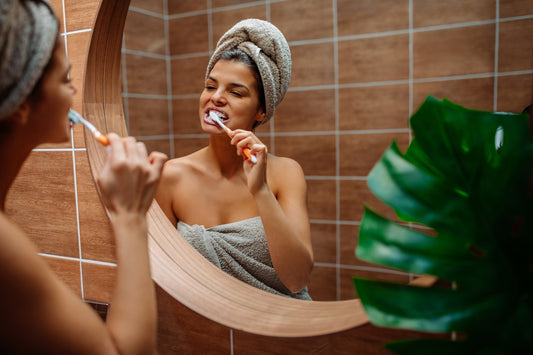Our resident micro-organisms are constantly changing in response to food, lifestyle, stress, incoming bacteria. Although we all have our own unique bacterial “fingerprint”, the exact make up of our gut microbiome alters over time. It all starts when we enter our mother’s birth canal…
How our gut microbiome develops
In the womb we are completely clean of any micro-organisms: we are 100% human! As soon as we are exposed to the outside environment, however, the bugs home in on us and so many will take up residence in or on us, our bodies will eventually become only 50% human and 50% micro-organisms.1
The first bacteria in the queue to colonise us are those in our mother’s birth canal. Being born in this way ensures that the baby is seeded with beneficial bacteria, such as Lactobacillus. These bacteria make lactic acid which (just like they do in yogurt) and this acidity helps prevent less-friendly organisms from invading. Being born by caesarean section, however, means that the first bacteria to colonise the infant will be those picked up from, well, who knows? Certainly it seems that being born by caesarean section makes one more vulnerable to certain diseases, such as MRSA.2,3
Whichever way we are born, we are soon exposed to micro-organisms from many sources: breast milk, our mother’s skin, other people’s skin, clothes, bedding, from the air. Luckily, our mother’s breast milk is specially designed to encourage the growth of beneficial bacteria and to inhibit growth of unwanted micro-organisms. Breast milk contains a special pre-biotic – a type of sugar that favours the growth of beneficial bacteria, especially Bifidobacteria.4
Our gut microbiota during early life is especially changeable and consists of relatively few types of organism compared with later in life (i.e., it has little diversity). The diversity increases through childhood and into adulthood, and is especially influenced by diet, although genetic factors also play a part.5 Eventually, a relatively stable microbiome is established in adulthood.
Still changeable
Even in adulthood, the gut microbiota can change under the influence of diet, geographical location, our environment (for example city vs farm living, having pets), other family members, acute infections, medications, fitness, and psychological stress. 3,6
Diet
Any food not digested by our own enzymes will go to feed our gut microbes.7 Where this food is the fibrous matter which feeds beneficial gut bacteria, this is a good thing,7 as it encourages them to produce helpful nutrients, to protect us from infection and to signal that all is well to the rest of the body. Where the food is insufficiently digested food particles that should have been efficiently broken down and absorbed before reaching our gut bacteria, it is likely to encourage the growth of unwanted micro-organisms. Studies show that changes in diet can rapidly change the population of micro-organisms in the gut – within just a couple of days.8 A change from a low to a high fibre diet, reducing refined carbohydrate or increasing protein resulted in shifts in the microbial composition of the gut.9,10
Stress
You might be surprised to learn that being stressed can affect your gut microbes.11,12 Stress hormones like adrenaline and cortisol are released by the cells lining the gut and directly inhibit growth of friendly bacteria.12 When we are stressed, the body directs the blood supply away from our gut and towards our muscles and brain which reduces the oxygen supply to the gut, resulting in damage to the gut lining and ultimately makes it possible for unwanted bacterial growth and invasion to occur.12 Finally, being stressed affects our immune system (much of which is centred around our gut to fight off potential invading bad bacteria), which again makes it more likely that unwanted microbes with thrive.12
Gut microbes in danger of extinction?
It has long been established that having a wide range of different types of gut bacteria is beneficial for health, but recently we’ve discovered that this diversity is decreasing in the developed world, with each successive generation carrying fewer types of bacteria than the previous one.13,14 Certain bacteria found in most hunter-gatherer populations are completely missing in industrialized populations, of numerous bacterial species. Is extinction in gut bacteria a consequence or a cause of the rise in ill health in the Western world?








